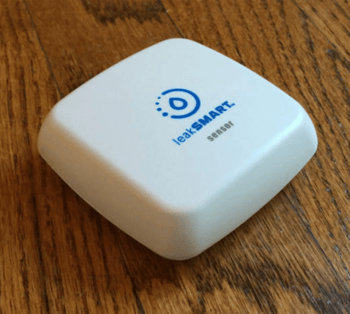 As a new homeowner, you probably know how important it is to get ready for the harsh reality of winter. What you may not know is the spring thaw can also take a toll on your plumbing system, walls, ceilings, and flooring if you don't take steps to prepare.
As a new homeowner, you probably know how important it is to get ready for the harsh reality of winter. What you may not know is the spring thaw can also take a toll on your plumbing system, walls, ceilings, and flooring if you don't take steps to prepare.
The risk of water damage is highest during the spring thaw; ice jams on the roof can cause a leak, snow accumulation around the home can even penetrate the foundation when it melts too fast.
If you're living in a brand new home, you won't have so much to worry about, as new home building materials are typically of superior quality. Regardless, it's smart to practice new home maintenance to extend your home's sustainability.
Here are some important ways you can get ready to welcome the warmth of spring:
 Remove Snow Around the Foundation
Remove Snow Around the Foundation
Shoveling snow away from your walkways is an important safety concern, but it's also a good idea to shovel away excess snow from around your foundation. Removing snow within a couple feet of the foundation reduces the amount of eventual snowmelt at the foundation and helps prevent the ground near your foundation from becoming saturated. Your lawn should already be graded in a way that encourages water to flow away from the house.
Remove Snow Buildup on the Roof
As snow builds up on the roof, it adds a substantial amount of weight that can damage the roof over time due to "winter fatigue." This buildup can also lead to ice dams or ridges of ice at the edge of the roof that prevent melted snow from draining. The water will continue to back up behind the dam, eventually leaking into your home.
When there's an excessive amount of snow on your roof, consider calling a snow removal professional. This service will remove the excessive amount of snow, but not all of it, which can damage your roofing. Don't attempt it yourself if it means climbing a ladder and getting on the roof!
If you can reach most of the snow from the ground, it's safe to do it yourself with a long-handled snow rake that has built-in rollers to prevent the blade from touching the roof shingles.
Check Your Floor Drains
Your basement floor drains are a form of emergency flood control to handle unexpected water intrusion. You may also have this setup in your laundry room. It's a good idea to make sure your floor drains are in good shape before spring rolls around. Pour a small amount of water into the drain and make sure it's flowing down. Increase the amount of water you're pouring into the drain to see if it's pooling or continues to flow.
If the drain is clogged, it's probably debris from sweeping. A plumber can clear the clog, or you can try yourself with a drain cleaning tool.
Test Your Sump Pump
Your sump pump works to send water away from your home when the water table rises above your home's foundation. Late winter and early spring is a good time to make sure your sump pump is in good working order. You can either have a plumber perform a check and regular maintenance on your sump pump or you can test it yourself. Here's a guide to testing a sump pump.
Clean the Gutters
As soon as it's safe to do so, remove the debris from your gutter system. Clogged gutters can contribute to foundation damage and flooded basements. By cleaning out your gutters, snow and ice melting on the roof will be better able to flow away from the home rather than becoming trapped and leaking inside.
While cleaning your gutters, make sure you give the downspout a little attention. Your downspouts should direct water from the gutters at least six feet away from the foundation.
 Install Water Sensors
Install Water Sensors
Want a high-tech way to stay on top of water damage? Consider installing flood sensors or water alarms in your home. These water detectors have sensors that sound an alarm when they come in contact with water. Even if you're away from home, you can receive alerts on your phone that water is somewhere it shouldn't be.
Water detectors can be installed near your sump pump, water heater, and washing machine to give you early alerts when water makes its way into your basement or an appliance is leaking. Here's a look at some top-rated leak detectors and a guide on what to look for when choosing a sensor, such as an onboard alarm, integration, and other onboard sensors like temperature to detect when pipes are freezing.
Spring thaw doesn't need to mean disaster. A little precaution can go a long way toward preventing unexpected damage to your home. As the weather begins to warm up, consider areas of your home most at risk, including your roof and foundation, and take steps to prepare for a sudden rush of melting snow.
Next on the list: spring cleaning! And we've got the only spring cleaning list you'll ever need to make the job quick and painless.





